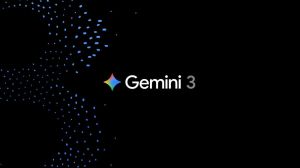Golden Retriever
This teases out the canine tales — of mythical Sarama, telegenic pugs and more

This teases out the canine tales — of mythical Sarama, telegenic pugs and more
Mutt or pedigree, what is the American First Dog going to be? As President-Elect Barack Obama mulls this important question and pooch pundits race around the kennels suggesting the best available options for the White House dog, this book charts the rise and fall of the Dog in Indian life and imagination.
If that sounds portentous, be assured that it is meant to be. It is a tail that wags the entire subcontinent. It travels from the earliest times when our ancestors were busy scratching the walls of their cave in Bhimbetka in Madhya Pradesh to the oh-so-adorable, present-day pug on television that, Bibek Debroy reminds us, is known as the Hutchwala Kutha. He does not miss a single paw print along the way and, mind, you it is a very long way from hunter-gatherer times and pre-history to Satyajit Ray’s films and every other Bengali writer and savant who has managed to draw attention to the dog in our own life and times.
Maybe a little gratitude is in order; tiny little barks and whimpers of endearment for Debroy has ventured into areas that no Indian researcher has gone before. But, alas, he has a tendency to preach, or should that be a desire to bark and gnaw at every bone and shadow of a bone that he finds on the way? He has the enthusiasm of a very young puppy who is determined to explore each hutch, fox hole and mound of hidden wisdom that either he or someone else has dug earlier, which is both endearing and unmanageable in turns.
He is the quintessential teller of a shaggy dog story that goes on forever and even that might just have worked if he had the charm to bring these alive, but he is more of a compiler of shaggy dog tales, folk tales, legends and any old reference that he can find that has to do with a canine. For instance, he tells us that Agatha Christie was one of those who loved dogs but he seems unaware of her own charming stories of the dogs she raised on the archaeological sites in the Middle East. There is a completely naff reference to Julie Andrews and her The Sound of Music lyric, but then again, we have to give him full marks for reminding us of Gieve Patel’s poem about a Pie-dog. If this was meant to be compendium of doggy tales, the format should have been one of pleasure and variety. The sort of book that makes one roll over on one’s back and wave one’s paws in the air.
There is, however, a larger purpose. Debroy wants to redress what he believes is a historical wrong. Dogs suffer from bad PR in India. He mentions but leaves aside the fact that among Muslims, the dog is seen as an unclean animal. He concentrates on showing us how “Caste Hinduism” has systematically degraded the position of the dog. While doing so, he exposes the orthodox Brahminical opposition to dogs through the ages. This may be entirely a good thing but in quoting chapter and verse from the texts, all the attendant, odious references to women, outcasts, rats, dogs and vermin also get an airing. It seems certain that these will only fuel the already latent beliefs that lurk in the Hindu psyche about who can be considered “clean” and “unclean”. There’s also a wholly unsubstantiated theory that he advances that the early Vedic gods were pro-dog and it is only with the advent of the god Vishnu that Indians became anti-dog. This is, of course, simplifying Debroy’s research for reviewing purposes. He’s nothing if not meticulous in citing his sources and his reasons.
These are the children as he calls them of Sarama, the primal dog in the Hindu pantheon. Since very few of us would have even heard of her, at least this should be enough for some tail-wagging. Every shaggy dog has his day and this is Bibek Debroy’s.







- 01
- 02
- 03
- 04
- 05
























